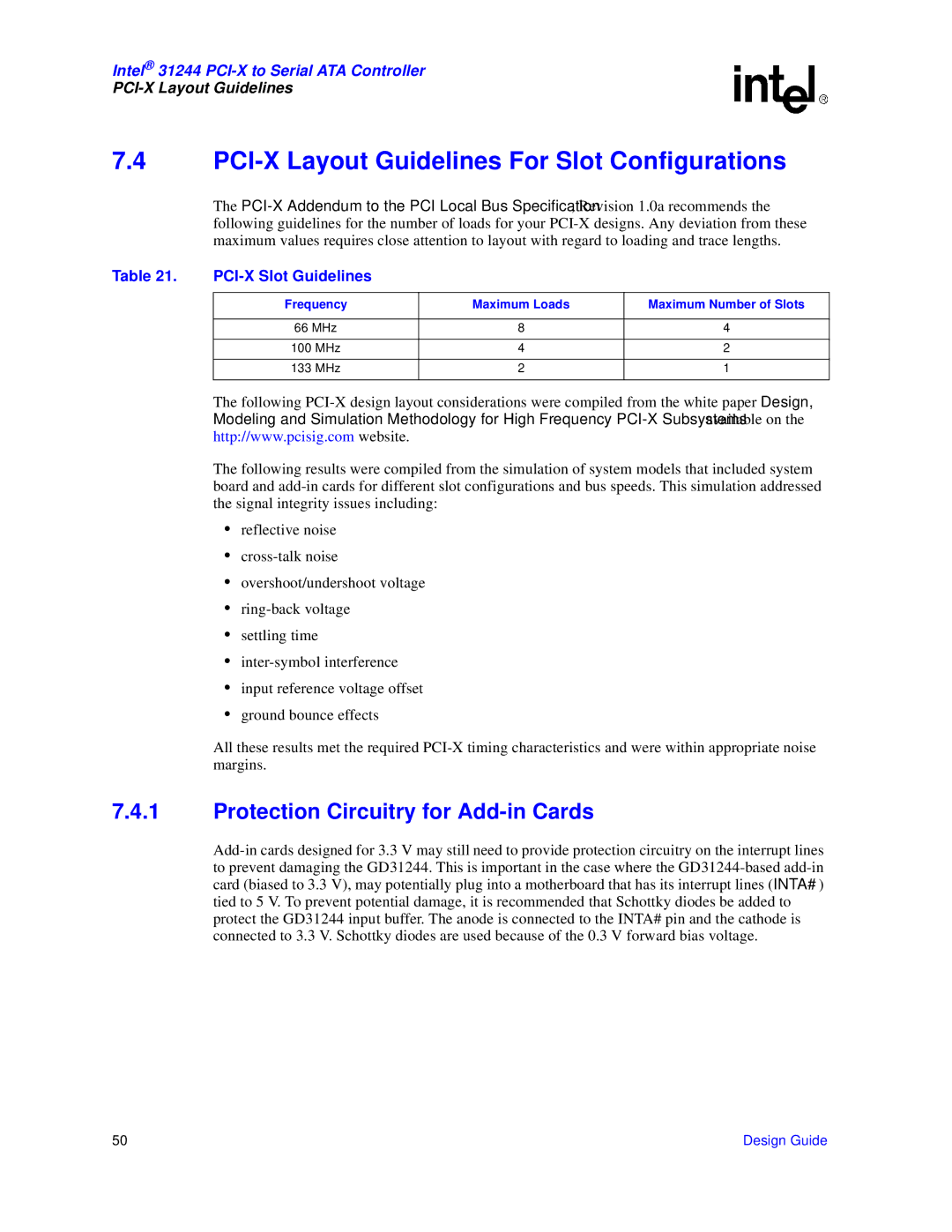
PCI-X Layout Guidelines
7.4PCI-X Layout Guidelines For Slot Configurations
The PCI-X Addendum to the PCI Local Bus Specification, Revision 1.0a recommends the following guidelines for the number of loads for your PCI-X designs. Any deviation from these maximum values requires close attention to layout with regard to loading and trace lengths.
Table 21. | PCI-X Slot Guidelines | | |
| | | |
| Frequency | Maximum Loads | Maximum Number of Slots |
| | | |
| 66 MHz | 8 | 4 |
| | | |
| 100 MHz | 4 | 2 |
| | | |
| 133 MHz | 2 | 1 |
| | | |
The following PCI-X design layout considerations were compiled from the white paper Design, Modeling and Simulation Methodology for High Frequency PCI-X Subsystems available on the http://www.pcisig.com website.
The following results were compiled from the simulation of system models that included system board and add-in cards for different slot configurations and bus speeds. This simulation addressed the signal integrity issues including:
•reflective noise
•cross-talk noise
•overshoot/undershoot voltage
•ring-back voltage
•settling time
•inter-symbol interference
•input reference voltage offset
•ground bounce effects
All these results met the required PCI-X timing characteristics and were within appropriate noise margins.
7.4.1Protection Circuitry for Add-in Cards
Add-in cards designed for 3.3 V may still need to provide protection circuitry on the interrupt lines to prevent damaging the GD31244. This is important in the case where the GD31244-based add-in card (biased to 3.3 V), may potentially plug into a motherboard that has its interrupt lines (INTA#) tied to 5 V. To prevent potential damage, it is recommended that Schottky diodes be added to protect the GD31244 input buffer. The anode is connected to the INTA# pin and the cathode is connected to 3.3 V. Schottky diodes are used because of the 0.3 V forward bias voltage.
